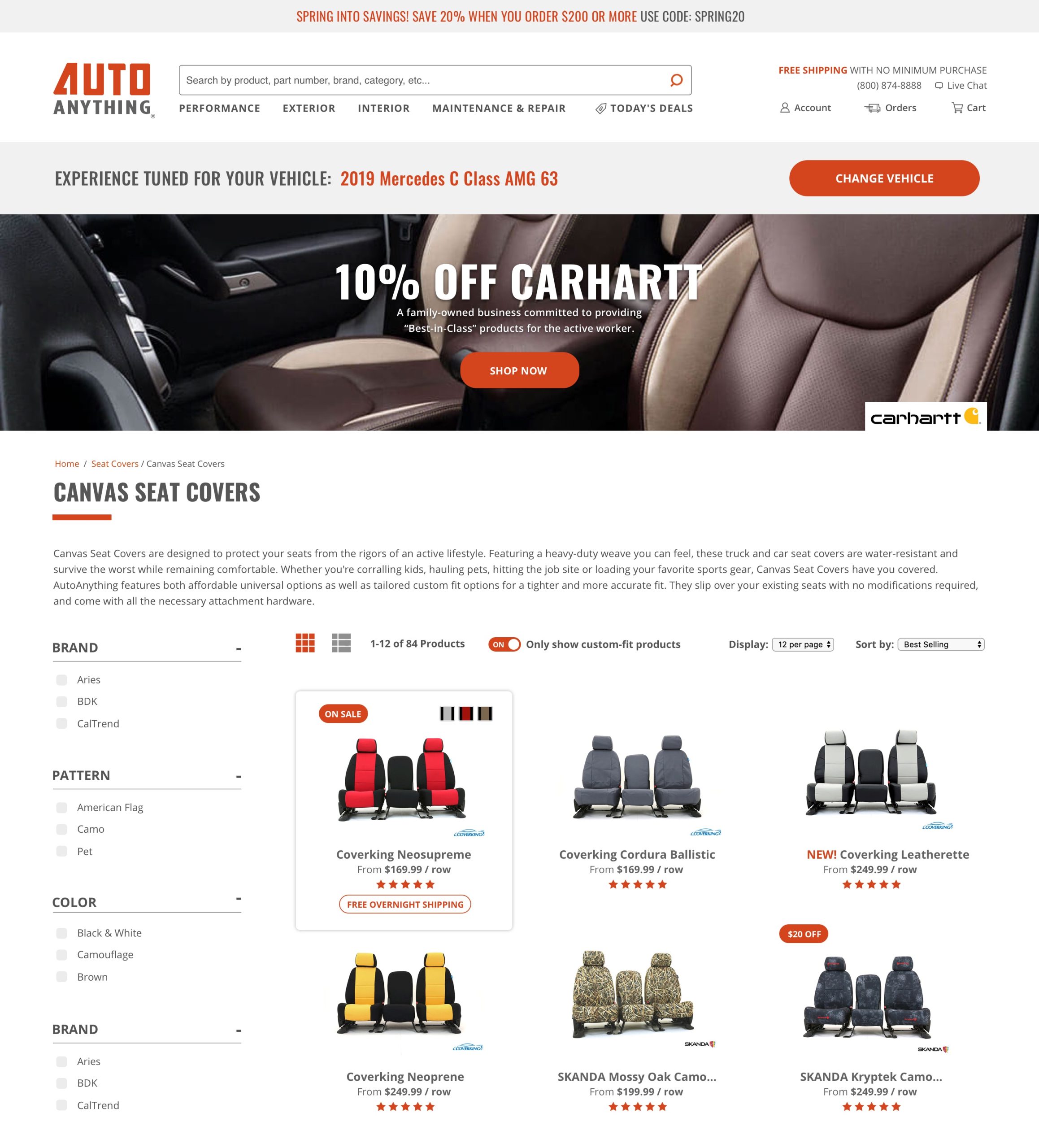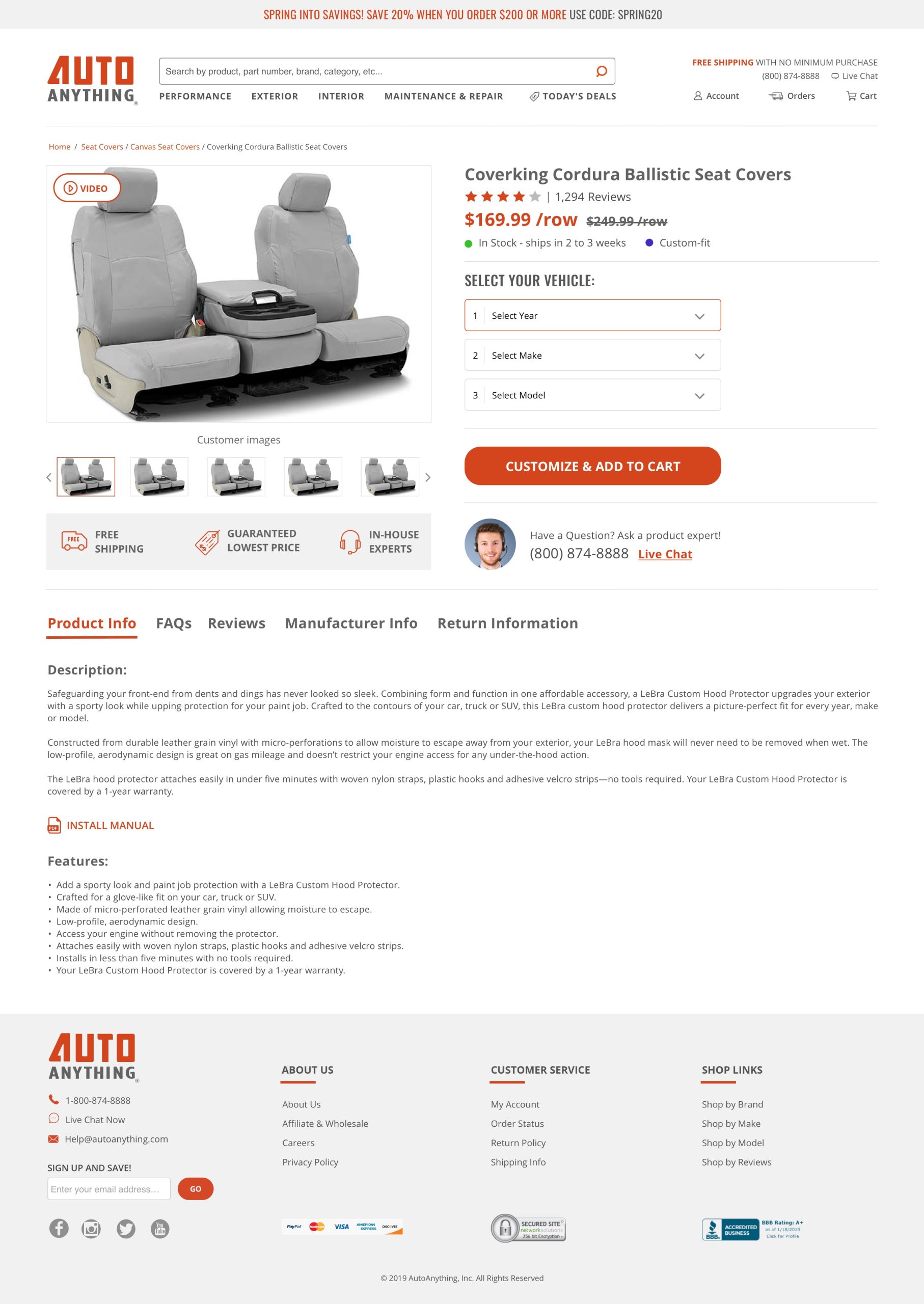Legacy Design, Complex User Journeys and Data Overload
As a Senior UX Designer at Autoanything, I was presented with the challenge of transforming a website with a dated design that failed to meet modern user expectations. The site’s user journey was convoluted, leading to frustration, especially when users needed to navigate through a vast selection of auto parts. Customers struggled to confidently choose the correct parts for their vehicles, partly due to an overwhelming amount of data and a lack of intuitive navigation. The existing design hindered user satisfaction and was not optimized for conversion, presenting a clear need for a more streamlined, data-informed experience.

Rebranding and Streamlined UX
To address these pain points, I spearheaded a comprehensive rebranding initiative that aligned the website’s design with current visual trends, aiming to enhance brand perception and user trust. I then focused on overhauling the information architecture (IA), ensuring that users could easily filter and navigate the complex product catalog. By simplifying the decision-making process, I implemented design patterns that broke down the overwhelming choices into manageable steps. Key features such as clear product details, dynamic filters, and vehicle-specific recommendations were introduced to guide users smoothly through the process. To ensure the design was truly user-centered, I leveraged A/B testing and heatmaps to validate design decisions, continuously refining the UX based on real-time user behavior.

Intuitive Product Discovery
A major challenge was simplifying Autoanything’s vast catalog while maintaining essential product details. I broke down the complex product data into user-friendly formats by adding dynamic filtering options, such as vehicle make, model, and year. Additionally, I implemented tools like fitment guides and visual cues to guide users in selecting compatible products for their vehicles. This approach made the shopping process more intuitive, reducing decision fatigue and improving conversion times.

Increased Engagement and Conversions
The redesigned website led to significant improvements in user engagement, brand perception, and overall satisfaction. By optimizing the user journey and simplifying product selection, we reduced friction points and boosted conversion rates. Ongoing A/B testing and iterative design refinements further enhanced the experience. Ultimately, the new UX resulted in higher sales, improved user confidence, and a modernized, more competitive brand presence.

